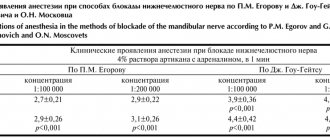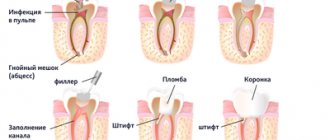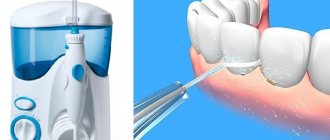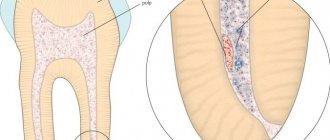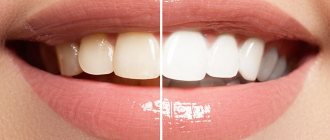Gutta-percha in dentistry
Gutta-percha is used as a natural material in many fields. The product has also found its application in dentistry.
Gutta-percha is a material obtained by processing the well-known latex, which is produced from the juice of the Gutta-percha plant. This product has high plastic properties, but at the same time is able to maintain a solid shape. The material acquires softness and pliability only under the influence of high temperatures, so canals are often filled with hot gutta-percha.
In dentistry, special gutta-percha is used to make pins, which, after treating the canals during endodontic treatment, are installed directly into the tooth canal. However, such a pin consists of only 20% gutta-percha (the upper part of the product), while the base is made of zinc oxide. In order for the treatment to be of high quality and, as a result of filling, each canal cavity is filled, gutta-percha pins of different sizes in length and width are produced.
Fiberglass pins
Widely used to strengthen structures during root canal treatment. They are relevant for teeth of all groups if at least two sides of the crown are preserved. The material provides reinforcement and allows for aesthetic restoration to be carried out at the proper level. Fiberglass posts are not recommended if there is significant damage or complete loss of the root portion. They are not installed for composite restorations with high loads, and are not used as a basis for bridges, metal-ceramic crowns, or other complex structures.
Several rulers (A, B, E) differ in shape. Within the line, elements vary in length and diameter.
- Model A. Available in four sizes, the higher the marking number, the larger the diameter. The parameter range is from 1.0 to 1.6, the length of all elements is the same - 18.0. The elements are cylindrical in shape, becoming thinner at the end.
- Model B. The ruler is available in three sizes, the diameter varies from 1.25 to 1.55. The pin is cylindrical in shape and begins to taper from a certain point. The final diameter varies from 0.7 to 0.9. Models differ in the ratio of the main part and the tapering part.
- Model E. Available in three sizes, which vary in diameter and length. The elements are used in aesthetic restoration in case of significant destruction of the crown. The pin is equipped with a volumetric head, which serves as the basis for the stump and creates a sufficient area for the distribution of the restoration material. These consumables have a shoulder and are therefore recommended for large, highly loaded restorations.
In the restoration section you can purchase the necessary tools and consumables to perform highly complex work.
Advantages of fiberglass pins
Medestika offers high-quality materials from well-known manufacturers. They are extremely convenient to use, do not cause allergies, and are perfectly compatible with fabrics. The advantages of IKADENT fiberglass posts include the following.
- High strength. Experimental tests show a value of 800 MPa.
- No static tension in the root canals when in contact with dentin. The pin does not injure tissue.
- Sufficient elasticity comparable to natural dentin. This allows the formation of a homogeneous structure with natural fabrics and composite materials. This solution promotes the most natural distribution of the chewing load, and therefore increases the durability of the restoration.
- The design is compatible with dental instruments.
- The surface of the elements is not subjected to chemical treatment.
- Despite their strength and elasticity, fiberglass pins can be easily adjusted in length and geometry using a diamond tool. You can choose the option for each patient individually.
- Light transmission. The material matches the color of natural dentin.
| It is important to know! In emergency situations, if something goes wrong, the pin can be evacuated from the canal using a steel drill or diamond bur. |
Indications for filling
Gutta-percha is not a classic composite material, so it is used only for certain indications. Considering that the product is in the form of a pin, the dentist uses it only during endodontic treatment to fill and seal the dental canal.
Indications for filling root canals with hot gutta-percha:
- destruction of the dental crown more than 50%;
- saving only one root;
- curved dental root canals.
A gutta-percha point can be used to provide support for a single denture or crown. The product is not used if the destruction of the crown does not amount to more than half of its surface. This is explained by difficulties with installing the pin.
An effective replacement for old methods
“Guttah” is translated from Malaysian as “resin”, “pertja” is the name of the plant itself, which grows in the Malay and Philippine Islands.
Hence the word gutta-percha. True, you don’t have to travel that far to get this material. In Russia, it is extracted from another plant - warty euonymus. Since the 70s of the twentieth century, this product, similar to rubber, began to be used in dentistry, in particular, gutta-percha pins and other methods using elastic resin are used when filling root canals.
Gutta-percha pins have a cone-shaped shape and different sizes, based on which they are marked with different colors from white to black. There are standard pins, which are used most often, and non-standard pins, which are larger.
However, it would be wrong to say that pins are made only from resin. Gutta-percha in the devices is 20%, with 70% zinc oxide, about 1% of a substance that makes the pin visible to x-rays, and a small percentage of dye and antioxidant.
Previously, dental canals were filled with paste, but it quickly dissolved and the tooth continued to decay. Gutta-percha has proven to be more effective for these purposes, so there are several methods using it:
- lateral condensation method;
- single pin method;
- vertical condensation method;
- thermoplastic obturation with the Termafil system.
The need for root canal filling usually occurs with pulpitis and periodontitis. The process occurs in several stages:
- cleaning teeth from caries;
- removal of the dental nerve;
- expansion and cleaning of channels;
- introduction of a sealer - a paste that fills microtubules;
- insertion of gutta-percha pins into the tooth cavity, filling and compaction of the pins;
- trimming excess parts of pins;
- installation of a temporary filling;
- after a control x-ray - installation of a permanent filling, restoration of the crown.
Benefits of gutta percha
The peculiarity of gutta-percha is its composition. The product itself has a natural base, so it is absolutely safe for the body. The use of gutta-percha and zinc to make a pin is also considered an advantage of this filling method, since both materials have a high biocompatibility.
The advantages of filling dental canals with gutta-percha also include:
- complete sealing of the canals - due to the plasticity of the material, after heating it completely fills all cavities in the root canals, therefore eliminating the possibility of the filling falling out and the risk of infection getting inside;
- possibility of unsealing - in some cases it may be necessary to remove the pin; professional removal of all material will not cause difficulties for a specialist;
- interaction with medicinal substances - the filling material does not react with any drugs, as well as with the materials from which crowns are made;
- high strength - the gutta-percha pin does not deform, does not change color, does not oxidize and does not dissolve over time;
- visibility on x-rays - the base of the pin is made of zinc, so it is visible on x-rays;
Dentists prefer gutta-percha filling when treating canals, since this method is of higher quality, and during the filling process there are no difficulties with filling the canal voids or fixing the material.
Advantages and disadvantages
The benefits of gutta-percha have been noted by dentists and patients:
– inertness (higher than that of gold, silver);
– stability, retention of the adopted shape after hardening;
– waterproof; – radiopacity;
– antibacterial;
– hypoallergenic;
– tight fit to dentin, complete filling of space;
– combination with periapical tissues;
– when heated – the ability to soften to a liquid state. Possibility of injection.
The disadvantages of the material include the following factors:
– due to its neutrality, gutta-percha does not transfer active substances to surrounding tissues;
– the procedure for inserting a pin into the root canal cannot be completely controlled; – gutta-percha is difficult to fix in a narrow root canal; – the structure does not have adhesion, so its installation requires the use of a sealed root mass.
Despite the difficulties that arise when using gutta-percha, its use is relevant due to its low cost and the lack of analogues.
Installation Methods
Gutta-percha is installed in the following ways:
• Hot. A pin heated to a liquid state is inserted into the root canal. The material fills the cavity evenly, without voids. This method is called volumetric filling.
• Cold. It is used by experienced dentists because there is a risk of voids in the root tubules, which can lead to infection of the root and the development of periodontitis.
Root canals are filled using the following methods:
1. With one rod. The method is used by doctors who have practiced treatment with sealer (special paste), since voids remain in the branches of the canal. A pin of suitable size is installed in the channel filled with sealer and shortened.
2. With side condensation. The root canal is dried, filled with paste, and then gutta-percha is installed, the end of which is generously soaked in sealer. The pin is fixed tightly in the cavity, achieving maximum contact with the canal walls. Additional pins are installed into the freed space until it is completely filled.
3. Using an injector. Gutta-percha is injected into the canal with a syringe. The disadvantage of the thermomechanical method manifests itself in complex and lengthy rehabilitation and patient discomfort.
4. With preliminary softening with Termafil. Gutta-percha passes into a liquid state, in which it fills the canal and its branches. This ensures the speed of the procedure, since the material heats up in a short time. Filling with this method is reliable and durable.
Filling process
Dental treatment when it is necessary to clean the canals always requires special professionalism of the dentist and the right approach to choosing treatment tactics. A qualified specialist will not resort to the procedure of installing a filling without first preparing the tooth.
Before filling the dental canals with gutta-percha, the entire cavity is treated using endomotors (special instruments). This method of cleaning the canals is considered to be of higher quality than laser or other procedures. After the channels are cleaned, they are dried with paper pins to eliminate the presence of saliva in the cavities.
The duration of treatment depends on the number of channels, the type of pathology and the characteristics of the cavities. On average, the procedure lasts 30–40 minutes.
Stages of gutta-percha filling:
- cleaning and drying the canals;
- installation of pins;
- softening gutta-percha using a special apparatus;
- condensation of gutta-percha in the upper part of the canal;
- supply of gutta-percha paste.
Filling the canals with material occurs in two stages, when the pin is softened and when additional heated gutta-percha paste is fed through the nozzle. In this way, it is possible to hermetically fill all channel voids.
Gutta-percha pins
The element is used for obturation of the root canal in a hermetically sealed manner. It is made from natural gutta-percha, popular in dentistry due to its high biocompatibility. It does not cause allergies and is not destroyed by biological media. Their huge advantage is their high radiopacity, which further facilitates therapy.
Excellent ductility for all types of condensation guarantees convenient installation and high-quality operation. Gutta-percha points are used in combination with a sealer; they fill the root canal easily and most tightly. If re-treatment or revision is necessary, they can be easily removed.
Over time, the material does not change its properties and does not dissolve in the root canal. Gutta-percha is completely indifferent to biological destruction.
| It is important to know! The main advantage of such pins is the high class of canal obturation. |
High-quality pins at affordable prices are collected on our website. By registering, you will receive additional pricing privileges.

